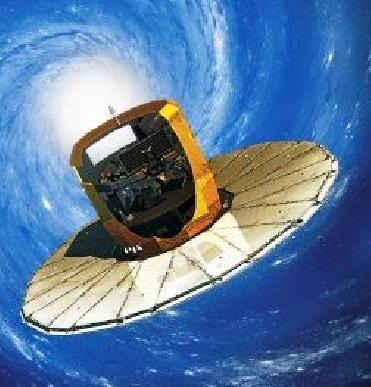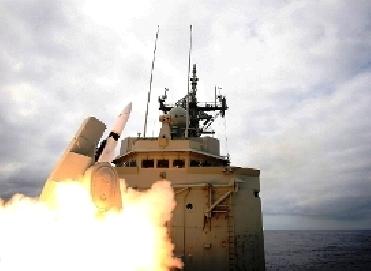
An artist's impression of the Gaia satellite. Image Credit: ESA.
The Milky Way is a spiral galaxy which is the home of our Solar System together with at least 200 billion other stars, their planets, thousands of clusters and nebulae.
In the infinite universe, Milky Way is like a small star like numerous other stars. Scientists have always been studying and exploring the deep hidden secrets of Milky Way galaxy.
European Space Agency's (ESA) "Gaia" is such an upcoming global space astrometry mission. Its objective is to make the largest, most precise three-dimensional map of Milky Way galaxy by conducting a census of one thousand million stars.
It will monitor each of its target stars about 70 times over a five-year period, precisely charting their positions, distances, movements, and changes in brightness.
Gaia (named after the Greek Goddess) is a successor to the Hipparcos mission of the ESA. The Hipparcos satellite ((an acronym for High Precision Parallax Collecting Satellite) was launched in 1989 and during its four-year lifespan, plotted the position of a 100,000 nearby stars with unparalleled precision.
Gaia will rely on the proven principles of ESA's Hipparcos mission to create a precise three-dimensional map of more than one thousand million stars throughout the Milky Way and beyond.
Gaia instead of orbiting around the Earth will be lifted towards the L2 Lagrangian point. The L2 orbit is an elliptical orbit about the semi-stable second Lagrange point.
Gaia weighing around 2030 kg comprised of two telescopes with a common focal plane and a latest generation instrument payload. It contains, astrometric, photometric and spectroscopic as its three seperate instruments. Astrometric will measure the stellar positions, photometric will measure the colours and brightness of all stars and finally will detect whether celestial objects are moving towards or away from us.
It will be equipped with two key spacecraft components. The first one is a deployable sun-shield, covering an area of one hundred square metres, to minimise the temperature fluctuations on the highly sensitive optics. The second is a new micro-propulsion system, to be used to smoothly control the spacecraft in order not to disturb the optics during the sky scanning.
Gaia will slowly rotate, allowing it to scan the entire sky. Positions for the brightest stars will be measured to an accuracy of 0.000007 arc-second.
David Southwood, ESA’s Director of Science and Robotic Exploration, signed a contract for the launch of Gaia with Jean-Yves LeGall, Chairman and CEO of Arianespace, at ESA Headquarters in Paris. EADS Astrium is the prime industrial contractor for building the satellite (including its scientific instruments).
Arianspace will be launching Gaia satellite for ESA using the Soyuz-STB/Fregat launch vehicle from the Guiana Space Center (French Guiana) in 2012. t will scan the sky for at least five years from the L2 Lagrangian point.
Gaia mission is a challenging project but the result will definetly be overwhelming as it will help the scientists to develop a greater understanding of the origin of the Galaxy and its subsequent evolution.
Courtesy:
- European Space Agency.
 Previous Article
Previous Article Next Article
Next Article













The Indian Air Force, in its flight trials evaluation report submitted before the Defence Ministry l..
view articleAn insight into the Medium Multi-Role Combat Aircraft competition...
view articleSky enthusiasts can now spot the International Space Station (ISS) commanded by Indian-American astr..
view article